ASUS N53JF: Midrange 15.6” 1080p, Take Four
by Jarred Walton on December 28, 2010 1:40 AM ESTASUS N53JF: Performs as Expected
Performance is pretty much right where you’d expect, given the hardware. It has the same GT 425M GPU as the Clevo B5130M and the i5-460M CPU is fractionally faster than the i5-450M in the XPS 15, so performance typically falls in between the two. Battery life is somewhat hampered by ASUS’ continued use of 48Wh batteries in their N-series, something we’ve complained about in the past. The U-series’ 84Wh batteries don’t feel much heavier than the 48Wh, and size is close enough that a slight reworking of the N53JF could have accommodated the larger battery. However, ASUS does do a reasonable job at power management, so even with a smaller battery than the competition it remains competitive. Here are the application results, followed by gaming and battery life.
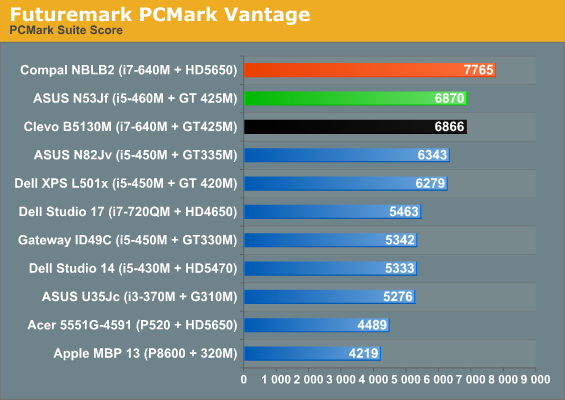
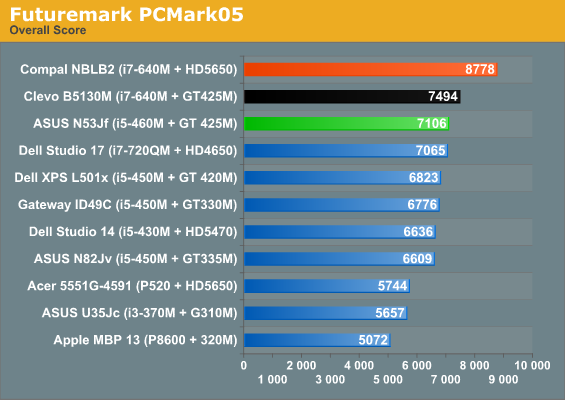
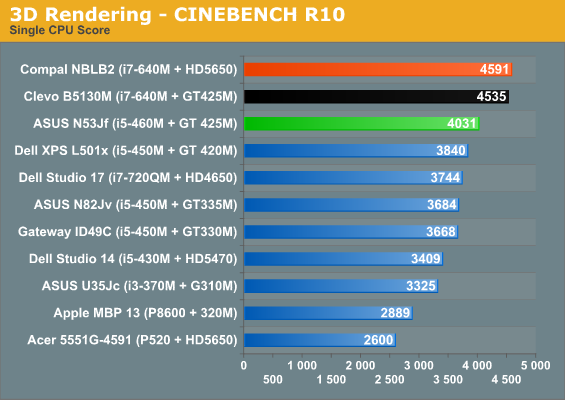
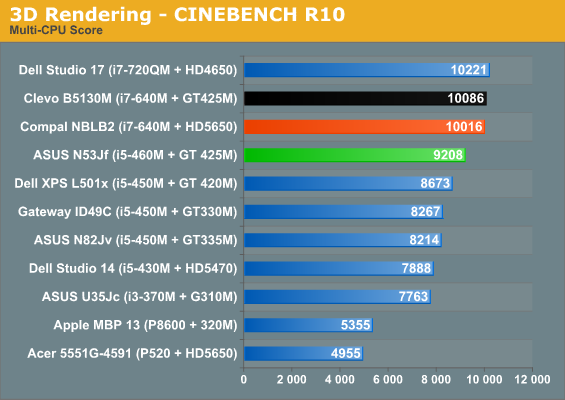
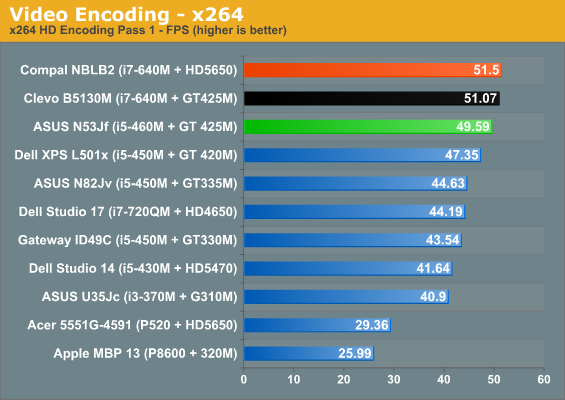

Starting with these general performance metrics, the N53JF is usually about 5% faster (sometimes as much as 10%) than the XPS 15, which goes with the CPU upgrade, with perhaps a few extra performance optimizations by ASUS. The Clevo and Compal laptops both have a faster i7-640M CPU so they come out ahead, but other differences come into play. In PCMark, the Clevo and ASUS laptops are nearly equal, but the Compal comes out 13% faster in Vantage and 23% faster in PCMark05—perhaps thanks to the HD 5650 discrete GPU. Once we hit the pure CPU tests of 3D rendering and video encoding, the charts fall into line and the i7 CPU outpaces the i5-460M by 8-10%.
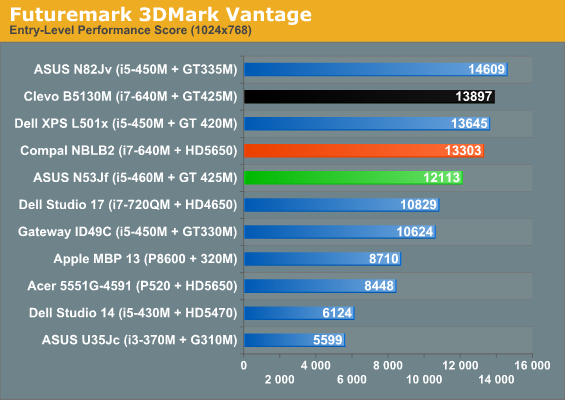
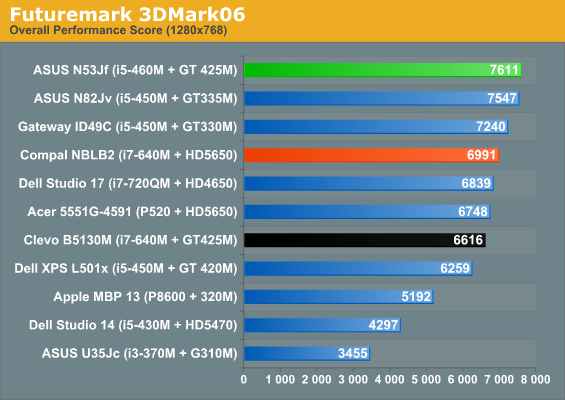
3DMark numbers aren’t a major focus for us, for good reason. Here we see the N53JF leading by up to 22% in 3DMark06, but then it trails by up to 15% in Vantage. Yeah, go figure. The Performance score in Vantage is 3559 for the curious. The 3DMark03/05 numbers aren’t any better (no graphs on those): 16612 in 03 and 13397 in 05 put it slightly ahead of the Clevo and Dell laptops, but the HD 5650 is 3% faster in 05 and 30% faster in 03. The reason for the large lead in 03 is that Optimus appears to be a bottleneck on ultra-high frame rates; the PCIe bus gets saturated, so when you start to try and push more than ~150FPS (i.e. in the Wings of Fury benchmark) you hit a hardware frame rate bottleneck. Given the level of hardware and the frame rates where this manifests, however, it’s nothing we’re concerned about—it should only show up in older titles that really don't stress the GPU much.










65 Comments
View All Comments
Luke2.0 - Friday, December 31, 2010 - link
Aww.... I see. I must have had false first impression when first getting in touch with Asus G51 specification, now that one feels real huge.Still, when you mentioned in the review this N53J being "heavier, wider, thicker, deeper than that one which in turn slightly larger than yet another one" I had some hopes LOL. (Not blaming you for this)
Thanks anyway.
Happy New Year 2011~~~
JarredWalton - Sunday, January 2, 2011 - link
I think the G51 is indeed heavier and larger than the N53; I was comparing the N53 to the Dell XPS 15. The G53JW in fact does support two hard drives, and it actually has some really interesting specs. When the Sandy Bridge refresh of that unit comes around, I'll be sure to hound ASUS about getting a review sample. We've looked at G73 twice, but no G53 yet.Luke2.0 - Monday, January 3, 2011 - link
Hi Jarred, I suppose you are busying yourself with new top-notch toy named Sandy Bridge.However, I stumbled upon this yesterday
http://forum.notebookreview.com/asus-reviews-owner...
Member "mzil" of the forum suspects the brightness level was not maxed during the test due to the reason he explained in there. Perhaps you could do a short check if this is so (and thus the display might be better than as recently reviewed)?
Let us know how things turn out, won't you? =)
Thank you.
(Gotta read the SNB review asap, thanks for this one as well)
manu12 - Wednesday, January 12, 2011 - link
there's something strange in your tests.For the Dell XPS15 laptop you specificy a
( 15.6" WLED Glossy 16:9 1080p (1920x1080) - AU Optronics B156HW1) screeh;
and you do the same for this Asus N53JF
(15.6" B+GR LED Glossy 16:9 1080p (1920x1080) - AU Optronics B156HW1)
and you have 'graphics benches' wich are completely differents , including big differences in contrast ?!
klunoee - Wednesday, May 4, 2011 - link
The only thing B&O is the amplifier for the speakers (B&O ICEpower technology). This means that the laptop has an efficient and powerful digital amplifier, but it tells you nothing about the quality of the speakers themselves or the audio codec delivering the sound to the amplifier.